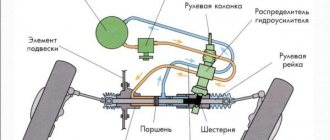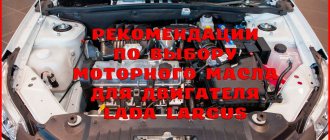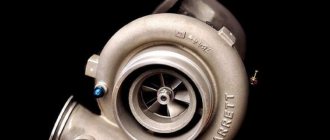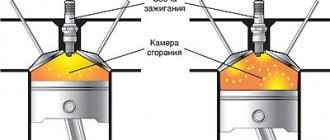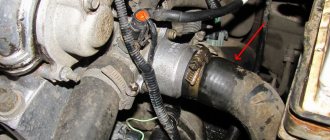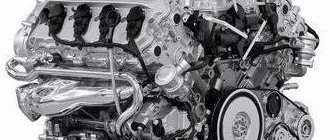Electric machine
- an electromechanical converter that converts mechanical energy into electrical energy (generator), or electrical energy into mechanical energy (electric motor), or electrical energy with one parameters (voltage, frequency, etc.) into electrical energy with other parameters.
Both magnetic and electric fields can be used as an energy carrier in an electric machine. Machines that use a magnetic field to convert energy are called inductive, while those that use an electric field are called capacitive. It is also possible to use magnetic and electric fields together. Such machines are called inductive-capacitive.
In practice, inductive machines are most widely used.
It is customary to distinguish electromechanical converters depending on the purpose of energy conversion into:
- generators
- sources of electrical energy; - electric motors
are sources of mechanical energy; - special electrical machines - electromechanical converters with more complex purposes
Where is an electric car engine used?
An electric motor for a car, as a traction device, was used on cars (or rather on their prototypes), even earlier than the internal combustion engine.
However, today, electric automobiles (that is what they are correctly called) are used on electric vehicles that operate exclusively on batteries or other electrical energy storage devices, as well as on hybrid vehicles. Hybrid cars are called so because they have both an internal combustion engine (ICE) and a battery.
History of creation
The first, one might say laboratory, prototype model of an electric car was created almost 200 years ago. It is known that in 1828, the Hungarian inventor Jedlik demonstrated a cart that moved using electrical energy. But this sample only showed the principle of electric traction. After all, a real DC electric motor capable of operating for a long time was invented in 1833 by British physicist William Sturgeon. In 1835 in Holland, Christopher Becker and Stratin Groningen built the first electric car. Of course, it was imperfect and did not go into mass production.
The first patent for an electric motor was received in 1837 by Thomas Davenport, from which time we can say that the construction of electric vehicles began. The problem with electric vehicles at that time was the very small charge of the then batteries. The American Thomas Davenport and the Dutchman Robert Anderson tried to solve this problem by creating a car that moved using electricity from disposable galvanic cells in 1842.
Railway workers achieved great success in the use of electrical energy for traction in the 19th century. Already in 1847, a locomotive (you can call it the first electric locomotive) was operating in Pittsburgh (USA), which received electricity along the rails. The batteries were very unreliable and had a very short lifespan, and they stored little energy. And only improving the performance of batteries solved the problem of using electric vehicles. It should be noted that the first speed record exceeding 100 km/h was recorded by an electric car.
So in 1899, the Belgian Camille Genatzi accelerated to 105.882 km/h in an electric car “La Jamais Contente”. As you can see in the picture (left) this electric car runs on rubber wheels (on pneumatic tires), this was also an innovation at that time.
A little earlier, electric omnibuses (then buses) were launched in London thanks to Ralph Ward. At the same time, electric taxis began operating in New York, electric bicycles and many other electric mobility devices began to be produced. In Russia, they (electric cars, or rather omnibuses) appeared in 1901 (photo on the right) developed by engineer Romanov. Already in 1902, an electric car was produced in Moscow for private use (photo on the left).
Let us remember that only in 1878 Nikolaus Otto launched a four-stroke internal combustion engine into production that could be installed in a car. With some modifications, it serves motorists “faithfully” to this day.
Yes, the Otto engine and the sharp drop in oil prices, from which gasoline is obtained, drove electric cars out of the market for almost 100 years, but they are again winning their “place in the sun”, crowding out classic internal combustion engines. All this is due to the fact that electric vehicles are practically silent, environmentally friendly and economically profitable to operate. It should be recalled that the efficiency of the electric motor is high (85...95%), and electricity is becoming cheaper. If it (electricity) is obtained using solar panels or wind generators, then operating an electric vehicle is almost free.
Today, the share of electric vehicles among the entire vehicle fleet is about 1%, but that’s it for now. Over the past 2 years, the number of sales of electric cars has increased by 45%. All that remains is to wait until gasoline and diesel cars slowly leave the market.
Cooling
Another problem is the cooling system for the battery. As you know, during operation it, and the entire electronic circuit, gets quite hot. And when heated, lithium-ion batteries release some gas. The more it comes out, the worse the characteristics of the device. Accordingly, overheating should not be allowed. Therefore, you need to use a reasonable cooling system. Everyone does things differently. Some people make a complex oil or water cooling system, while others simply position the battery so that it is constantly blown with air. The last move allows you to abandon cooling systems in principle.
It takes more time to transfer the electric motor. How to use the accumulated energy. Another major problem with lead-acid batteries is weight. In terms of the amount of energy they can store, their weight is almost prohibitive when considering that an electric vehicle must carry its own power source.
It has undeniable performance qualities such as immediate maintenance, silence, no vibration and no pollution. Because the gasoline engine gradually increases its power. The electric motor gains and loses power very quickly.
In addition, the wires through which the current passes, as well as all other electrical and electronic parts, heat up. If you do not take care of high-quality cooling, then in the summer it is simply impossible to drive in such a car. Therefore, cooling the car is another scourge that haunts electric vehicles.
However, simply using an electric motor on a conventional vehicle may not work. It is necessary to design an electric car entirely depending on the engine it will use and its characteristics. Electric motors only have holes strategically placed in their fittings through which air can flow freely. Upon request, these motors have a small fan that forces air inside.
Lubrication is also practically non-existent. The bearings of the electric motors themselves are self-lubricating by design, or there are places where a few drops of suitable lubricants are installed at several intervals. Due to their shape, electric motors can always use bearings instead of bushings, making lubrication even easier.
The principle of operation of an electric car
The classic diagram of an electric car is shown in the figure on the right.
The batteries located here along the body give their energy through the control device (CU) to the electric motor (EM), and it rotates the wheels. But this layout is far from perfect. The fact is that the electric drive has a very important advantage over any other types of drives - recuperation. Recuperation is the conversion of motion energy into electrical energy. You and I all know that energy does not disappear anywhere, it can only be transformed from one type to another. So, the energy of movement (kinetic energy) when braking a car is converted into heat. You and I simply heat up the brake pads and release this heat to the atmosphere. That is, in essence, we throw away this energy. In electric cars and hybrids, we can convert most of the kinetics into electricity and store it again in the battery. Hybrid cars always have an internal combustion engine in addition to the battery. For what? To extend the driving distance of an electric vehicle. The fact is that even modern batteries can accumulate energy for 100, well, a maximum of 200 kilometers. Agree that this is quite a bit. When using an internal combustion engine, as an additional source of energy, you can extend the journey to 800, and sometimes up to 1000 kilometers without recharging the battery and without refueling with gasoline or diesel fuel.
As a rule, on cars of this type (hybrid cars) there is no direct impact of the engine on the drive wheels. The internal combustion engine rotates a generator that produces electrical energy, and this energy is supplied to electric motors or energy storage devices if the car is coasting or stopped (at a traffic light, for example). Not only batteries can be energy storage devices; recently, supercapacitors have become increasingly popular.
The engine in hybrid cars can be connected to a generator, which produces electricity. This electricity can be used for acceleration (usually there is not enough of it, the battery does not supply electricity well at the start), or for charging the battery if the car is running or parked. It is extremely rare that the internal combustion engine is not connected to the generator. With this scheme, the internal combustion engine helps the electric motor accelerate the car. Where are the savings? The thing is that no matter how the internal combustion engine and electric motor are connected, the internal combustion engine always operates in nominal mode. In which maximum savings are achieved. The efficiency of an internal combustion engine is always indicated for the nominal mode and it ranges from 36 to 42. For low speeds, this efficiency does not exceed 7...10%.
There are also more complex systems. Here, for example, is how parts interact in a modern Toyota Prius hybrid car. Here the internal combustion engine can work as a generator, or it can also help rotate the drive wheels through a planetary mechanism. When braking, the motor/generator (MG2) converts kinetic energy into electrical energy, charging the battery. As a result, good savings are achieved. Yes it is difficult, but it is worth it. Toyota Prius consumes about 3 liters of gasoline per 100 kilometers.
What are the main disadvantages of electric vehicles?
1. Relatively small range on one charge. The capabilities of electric vehicles still do not allow for long trips from one city to another on a single charge. The range of electric cars in the mid-price category is about 160-250 km. The JAC iEV7S electric car, which is planned to begin production in February of this year, provides a range of 280 km on a full charge.
2. Electric cars cannot be called absolutely environmentally friendly transport. Most electricity is generated by burning fossil fuels. According to World Energy Council estimates for 2020, about 66% of the world's electricity is produced from coal, gas and oil. Despite this, according to the Electric Vehicle Association of Canada, the use of electric cars, charged even from non-polluting types of electricity, halves carbon dioxide emissions into the atmosphere.
3. Duration of the charging process. Even a small capacity battery (25 kWh) can be charged in 7-12 hours from a household outlet. It takes up to 32 hours to charge Tesla's 85 kWh battery. Even fast charging systems like the Tesla Supercharger charge the battery to 80% in a maximum of 30 minutes. JAC iEV7S in fast charging mode replenishes the battery by 80% in 1 hour and 100% in 1.5 hours.
4. Limited battery life. According to experts, the actual battery life is about 8-10 years. During the first five years of operation of electric cars, the power reserve drops by 20-30%. New batteries are quite expensive - a battery for a Nissan Leaf will cost $4-5 thousand, for a Tesla Model S - $10-20 thousand.
The device of a car traction motor
The design of a car's electric motor depends on many factors. Electric motors for electric vehicles can be either direct or alternating current. Recently, only an AC motor (synchronous or asynchronous) has been installed on this type of machine. The first electric motors for cars were, of course, DC. This is logical, because the battery produces direct current, and the electric motor also produces direct current. They are still used now, but much less frequently. However, everything is not as simple as it seems at first glance. AC electric motors are much more economical and reliable. They may look exactly the same as DC motors. Different types of electric motors have different markings. AC means that this motor is alternating current, DC means direct current.
The operating principle of any electric motor is the interaction of magnetic fields. Even Faraday, at the dawn of electricity, noticed that if a conductor through which current flows is placed in a constant magnetic field, then this conductor tends to break out of this field by deviating in one direction or another depending on the direction of the current. If there are many of these conductors and the magnetic field is strong, then the operation of such a DC motor will be appropriate.
Each electric motor has a rotor (sometimes called an armature) and a stator (also called an inductor). The rotor is the rotating part, the stator is the non-rotating part (stationary). Both the rotor and stator have windings consisting of separate conductors. To supply electric current to the rotating part of the engine, there is a collector (a set of copper plates assembled into a cylinder). Current is transferred from the stator to the collector using special brushes. The interaction of magnetic fields causes the rotor to rotate.
AC motors operate slightly differently. The stator creates a magnetic field that rotates itself. It (the field) can carry steel objects with it, that is, force the rotor to rotate. For this reason, a winding is not needed on the rotor. But in this case, the rotation speed of the rotor will lag behind the rotation speed of the stator magnetic field. Such electric motors are called asynchronous.
In order to know exactly at what frequency the rotor rotates and regulate this frequency, it is necessary to place an electric winding on the rotor. Such electric motors are called synchronous. But the weak link of the electric motor reappears - the collector. Brushes wear out and need to be replaced. Asynchronous motors do not require maintenance.
The figure shows two types of synchronous motors (with salient and implicit poles). Let us repeat that an asynchronous motor differs only in that there is no winding on the armature.
During operation, each electric motor heats up. For this reason, the topic of cooling electrical machines is very important. The cooling system can be autonomous or forced. On electric motors of heavy-duty vehicles, for example BelAZ, cooling is forced (cooling air is supplied by a special fan). In small cars and passenger cars, there is an impeller on the engine itself that blows air through the engine, thereby cooling it.
Batteries
By the way, another interesting point is the batteries. It is their characteristics that determine how long the car can travel on one charge. Here, as a rule, they consist of a set of ordinary batteries that are used in laptops, electronic cigarettes, and so on. Their connection diagram is such that at the output we get sufficient power to spin up the engine and sufficient capacity to drive maximum distances. To ensure that the battery does not discharge immediately, a special device is responsible - a charge and discharge controller.
The battery used by gasoline vehicles is simply a "get" starter. But the current required to turn on the starter is so high that after a few seconds it completely drains the battery. On the other hand, lead-acid batteries in their discharge reaction have a minimum point from which this reaction becomes irreversible, that is, even if current is passed in the opposite direction, it will no longer be recharged. It should also be noted that there is no perfect correlation between loading and unloading times.
Characteristics of automobile electric motors
The characteristics of an electric motor are the ratio of its parameters to its price. This is best presented in tabular form. The table shows popular electric motors of both direct DC and alternating AC current. Some motors have multiple voltage ratings, meaning they are capable of operating at all specified voltages. Power N is indicated as nominal. Torque M, also at rated operating mode. The rotation speed is indicated as the maximum permissible.
The characteristics of a car's electric motor cannot be compared spontaneously. For each specific case, for a specific car, our own original electric motor can be developed. But the AC electric motor, and it is presented here alone, clearly differs for the better from DC electric motors of the same power, at least in terms of price and power output (AC – 10.7 $/kW, DC – 450 $/kW).
What is important to consider when buying an electric car?
The main characteristics when buying an electric car are not the speed and power of the engine, but the range on one charge and efficiency. The mileage from one charge depends both on the battery capacity and on the efficiency of the car.
Modern mass-produced electric cars have batteries with a capacity of more than 30 kWh and a range of 160 to 200 km. It is worth considering that cars of the same model, but of an older year of manufacture, may have less capacious batteries (24 kWh) with less mileage. The maximum speed of most electric vehicles does not exceed 150 km/h, which is optimal for traveling in an urban environment.
When purchasing an electric vehicle, you should consider the power of the charger and the types of connectors for fast charging. The charger is used when charging from an alternating current network. Most electric vehicles come standard with a 3.6 kW unit. It is not suitable for rapid charging stations (10-22 kW), which can charge the battery in 4 hours.
Cars from some manufacturers have more powerful chargers. The devices also differ in voltage type, so when ordering a car from the USA, it is worth purchasing an additional charger designed for 220 V. Fast charging (80% of the battery in 30 minutes) with direct current requires a special connector. The standards for these connectors are different in different countries. Japanese manufacturers support the CHAdeMO standard, European and American manufacturers support Combo 1 and Combo 2, and Tesla cars have their own fast charging standard, which is not suitable for everyone else, but with the help of an adapter they can be charged at any station.
Development prospects
The introduction of synchronous and asynchronous engines in cars was hampered by the slow development of electronics capable of controlling the processes in these same engines. Now these barriers are being removed, electronics are becoming reliable and relatively cheap. For this reason, AC motors in electric vehicles will likely be adopted almost everywhere in the near future.
The invention of new structural materials makes it possible to increase the reliability and durability of electric motors.
As for electric vehicles in general, they have a great future.
